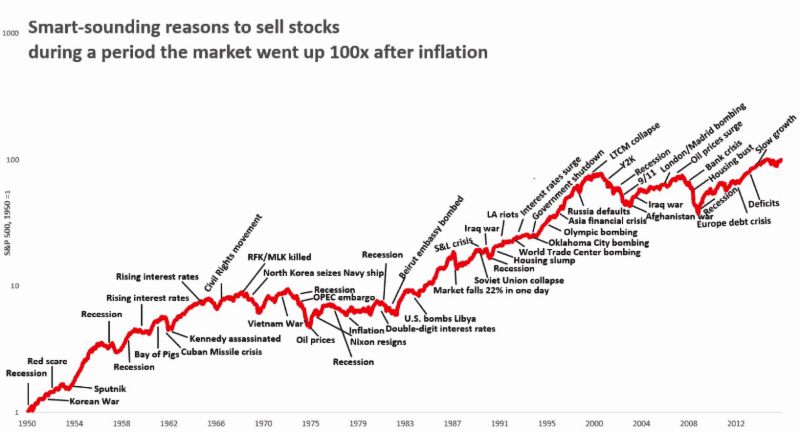Fed Fun
Spring has sprung, at least officially, but domestic stocks declined last week after a sell-off on Friday, the worst day in the market since January 3, took the S&P 500 down from five-month highs reached the day before. A plunge in longer-term interest rates – a rally in bond prices – seemed to be the primary catalyst. This action took a heavy toll on financial shares by threatening lower bank lending margins. Conversely, the prospect of lower rates helped the real estate sector, which was the best performing sector within the S&P. Technology and other growth-oriented shares also continued to outperform value stocks, which are typically more sensitive to economic conditions.
U.S. monetary policy and deepening concerns about the global economy appeared to dominate market sentiment before Friday. Traders focused much of their attention on the Federal Reserve’s policy meeting on Wednesday. As was widely expected, the Fed kept interest rates unchanged. Markets are now pricing in a roughly one-in-three chance of a rate cut in 2019.
At his post-meeting press conference, Fed Chair Jerome Powell acknowledged that growth in U.S. consumer and business spending had slowed in recent months and pointed to a more pronounced slowdown in European economies. In advance of the Fed’s statement on Wednesday, sentiment seemed to be dampened by profit warnings from several companies closely tied to swings in global demand, including BMW, FedEx, and UBS.
Bad news on Friday morning about the German manufacturing sector deepened these concerns and seemed to spark the day’s sell-off. Traders also seemed concerned by drops in IHS Markit’s gauges of both service and manufacturing activity in the U.S. Earlier in the week, the Commerce Department reported that factory orders had risen only slightly in January, while shipments had declined for the fourth consecutive month. A gauge of manufacturing activity in the mid-Atlantic region indicated healthy expansion and surprised on the upside, however.
As noted above, the generally downbeat tone of global economic data and the dovish signals from Fed officials sent longer-term U.S. Treasury yields down sharply. The yield on the benchmark 10-year U.S. Treasury note approached 2.4 percent in trading Friday, its lowest level since December 2017, and closed the week at 2.44 percent. November saw a seven-year high in 10-year yield of 3.232.
The rally in longer-term rates caused the yield on the 10-year note to fall below the yield on the three-month U.S. Treasury bill, resulting in an inversion of the yield curve. Such inversions have reliably signaled an oncoming recession in past decades, although some think that protective measures by central banks in recent years to hold down longer-term interest rates may be making the signal less reliable.
Despite the looming Brexit deadline, the STOXX Europe 600 was little changed through the first four days of the week before Friday’s manufacturing data sent stocks lower. IHS Markit’s gauge of purchasing manager’s index (preliminary) for the eurozone showed a below forecast reading. Germany’s manufacturing purchasing manager’s index seemed to be of particular concern, falling to a six-year low.
In Asia, mainland Chinese stock markets rose for the second straight week as domestic investors there stayed confident that the government would continue to step up easing measures to counter China’s slowing economy. For the week, the Shanghai Composite rose 2.72 percent and the large-cap CSI 300, China’s blue-chip benchmark, added 2.37 percent. Japanese stocks were also higher last week, although more modestly. The Nikkei 225 gained 0.8 percent for the week.
From the headlines:
- Federal Reserve Chairman Jerome Powell said Wednesday that it “may be some time” before the central bank needs to adjust its monetary policy, signaling that the central bank will not raise interest rates any time this year, giving the market what it wanted, for better or worse. The comments came as he unveiled another startlingly dovish outlook that saw projections for future interest-rate increases slashed from two to zero along with an announcement that quantitative tightening — the act of shrinking the Fed’s huge pile of balance sheet assets — would end even earlier than thought, in September. Mr. Powell was careful not to speak ill of the U.S. economy, but one has to wonder if the Fed is concerned about the data more and market reaction less, especially given that stocks closed down Wednesday after the announcement. For example, note this week’s first Chart of the Week.
- On Friday evening, after the market’s close, Special Counsel Robert Mueller delivered a report to attorney general William Barr detailing his nearly two-year investigation into Russian interference in the 2016 election. The comprehensive report, still confidential as of press time, marks the end of Mueller’s probe but sets the stage for big public controversies to come. The next steps are up to Trump’s attorney general, to Congress and, most likely, the federal courts.
- Also on Friday, President Trump tweeted that he would be blocking “additional large scale Sanctions” on North Korea, which he said had been announced earlier in the day by the Treasury Department.
- A newly inverted yield curve – on Friday, the bond priced the interest rate on three-month U.S. Treasury bills higher than the interest rate on 10-year U.S. Treasury notes – suggests that the Fed was right to pause its rate-rising regimen. Such an inversion has been a sure-fire harbinger of the past seven recessions.
- U.S. trade representative Robert Lighthizer and Treasury Secretary Steven Mnuchin plan to fly to Beijing this week to meet with Chinese Vice Premier Liu He, who is expected to lead a Chinese delegation to Washington to continue talks next week. The deal they are working toward would include substantial increases in U.S. exports to China, and Chinese pledges to better protect intellectual property, end pressure on U.S. companies to transfer technology to their Chinese partners and reduce subsidies for Chinese companies. But other issues big remain. President Trump said last week that he plans to keep tariffs in place on Chinese goods for a “substantial period of time,” possibly even after a trade deal is forged to ensure Beijing’s compliance. China’s spending spree during the global financial crisis helped pull the world economy out of recession. However, Beijing’s latest stimulus might not pack the same punch.
- Of the 11,021 ratings on stocks in the S&P 500 ahead of the upcoming first-quarter earnings season, 54 percent are buy ratings, 40 percent are hold ratings and 6 percent are sell ratings, according to FactSet. Of course, analyst’s firm don’t generally want their clients to sell stocks. The energy (67%), health-care (60%) and communication-services (59%) sectors have the highest percentage of buy ratings, the data showed. Meanwhile, the consumer-staples sector has the highest percentage of hold ratings (50%) and sell ratings (11%).
- The Trump administration pushed a $1.5 trillion tax cut through Congress in 2017 on the promise that it would spark sustained economic growth. While the tax cuts did goose the economy in the short term, administration officials now concede they will not deliver the three percent annual growth the president promised over the long term.
- When GDP became the dominant measure of economies in the 1940s, wide adoption of the internet was still a half-century away. Today, the internet is responsible for a major chunk of economic activity, but GDP misses much of it. This has widened the gap between the closely watched metric and actual economic health.
- U.S. manufacturing output declined for the second consecutive month in February, a fresh sign that a long-predicted slowdown is hitting the U.S. economy. The question now is how sharp and long-lasting the slowdown will be. Americans’ spending on services slowed sharply in the fourth quarter, a development that will likely force downward revisions to official estimates of fourth-quarter gross domestic product.
- Bloomberg’s PMI tracker, which follows every region in the world, shows data have slowly moved two levels down from “improving” for much of 2018 to “neutral” at the start of 2019. U.S. PMI fell to its lowest in 18 months. Manufacturing output fell for the second consecutive month in February, the first back-to-back decline since 2017.
- Baby boomers may be more prepared for dying than living.
- 46 percent of Americans say they don’t expect to be financially comfortable in retirement.
- Median compensation for 132 top CEOs exceeded $1 million a month in 2018: $12.4 million a year, up from $11.7 million in 2017.
- Bridgewater, Ray Dalio’s mammoth hedge fund, is betting that debt-stricken Brazil’s growth will be the “strongest in the world” in 2020.
- Is the SEC using Regulation Best Interest as “a marketing slogan”?
- With insurers likely to add social media to the data they review before issuing policies, it might be wise to post pictures from the gym, but not happy hour.
- BlackRock is cutting the price big clients pay to invest in its largest equity index fund, a bid by the giant money manager to close the gap with cheaper rivals.
- Flows into multi-factor U.S. equity ETFs have gone gangbusters so far in 2019.
- Japan’s government downgraded its view of the economy for the first time in three years, blaming the U.S. trade war for weak exports and industrial output.
- UK Prime Minister Theresa May got her requested Brexit delay, sort of. If the British Parliament approves a withdrawal agreement this week, the EU will extend the deadline to May 22, giving both sides time to approve legislation to implement the deal. But if Parliament again votes no, the UK will have only until April 12 to indicate how it wants to take the Brexit process forward, meaning a disorderly crash-out is still possible.
- The Economic Report of the President, prepared by the Council of Economic Advisers, and which runs 705 pages and features chapters on “expanding labor force opportunities” and “ensuring a balanced financial regulatory landscape,” claims to be written by Batman.
- A Morningstar survey explored what attributes investors value in an advisor. Of course, investors often want the wrong things.
- Cyclone Idai swept through southeast Africa last week, killing thousands and leaving entire towns and farmlands underwater. The aftermath is only just starting to become clear, assisted by drones and satellite imagery.
- As polarized as the country is, Americans agree on a variety of things. Most fundamentally, there is agreement that the future is grim. Across the board, there is further agreement that the standard of living will fall by 2050, health care will be less affordable, a terrorist attack as bad or worse than 9.11 will happen, public education will deteriorate, robots and computers will take many U.S. jobs, people will be forced to work into their 70s, and politicians won’t be able to handle it.
[ctct form=”269″]






